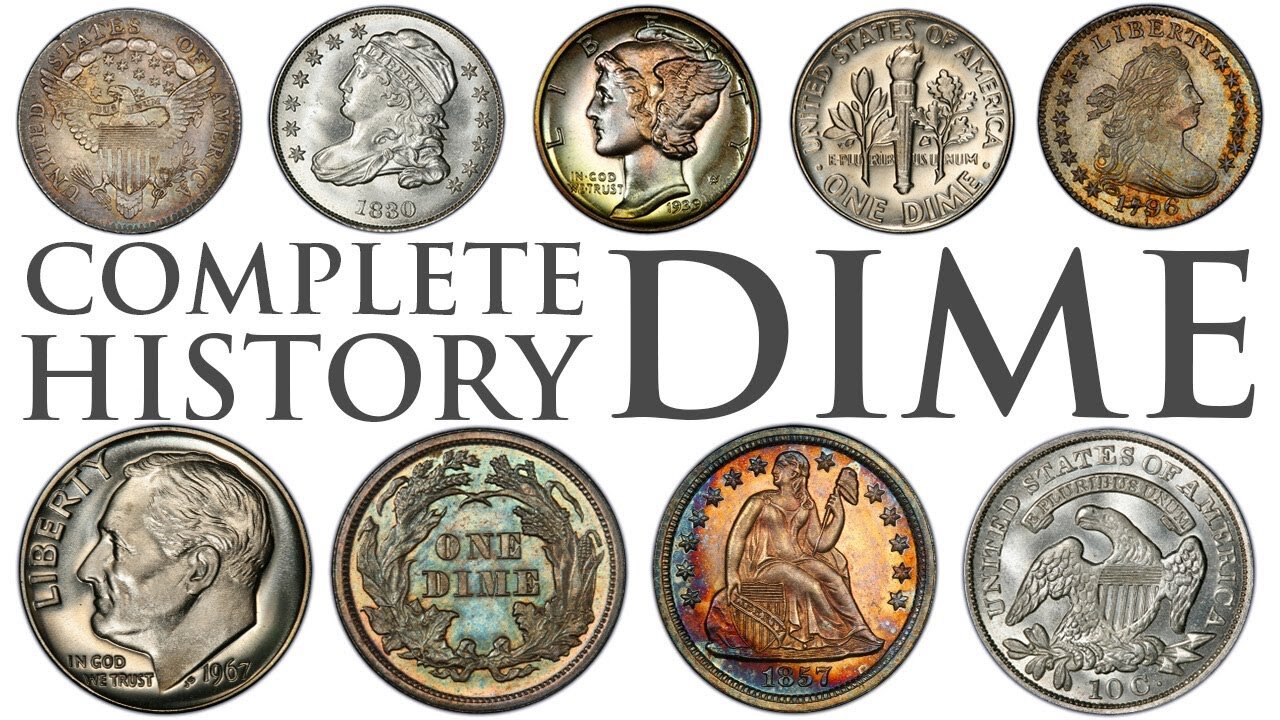Premium Only Content

The Complete History of the United States Dime
The “Roosevelt” theme is the current design of the U.S. 10-cent coin. The U.S. Mint first issued this design in 1946, soon after the death of President Franklin D. Roosevelt. The Mint released it on January 30 of that year to honor his birthday. The obverse (heads) shows Roosevelt’s profile. The torch, olive branch, and oak branch on the reverse (tails) represent liberty, peace, and strength.
The dime was a logical choice for honoring Roosevelt because he supported the March of Dimes, a program that raised funds for research to find a cure for polio. He contracted polio when he was 39 years old.
The Mint made the first dimes in 1796. They were small silver coins. The designs from 1796 to 1837 showed Liberty on the obverse and an eagle on the reverse. In 1837, a wreath design replaced the eagle. Liberty, in various forms, stayed on the dime until 1946.
From 1916 to 1945, the Mint produced the “Mercury” dime designed by Adolph A. Weinman. The obverse showed a profile of Liberty wearing a cap with wings to represent freedom of thought. The design got its name because it reminded people of the Roman god, Mercury. A fasces – a bundle of rods tied around an axe – and an olive branch appeared on the reverse. The two symbols represented America’s military readiness and the desire for peace. The Mercury dime is considered one of the most beautiful coins in our country’s history.
In 1965, the Mint removed silver from the dime and the composition became copper-nickel clad.
-
 LIVE
LIVE
TimcastIRL
2 hours agoDoD Branch Chief GOES ROGUE, Vows To RESIST Trump, Tulsi Refers Leakers For PROSECUTION |Timcast IRL
38,420 watching -
 LIVE
LIVE
Man in America
5 hours agoWAIT!? China's Population is LESS THAN 500M? Expert Reveals SHOCKING Data
737 watching -
 LIVE
LIVE
RalliedLIVE
5 hours ago $0.37 earnedWednesday Warzone Special w/ Rallied
424 watching -
 9:34:32
9:34:32
Dr Disrespect
10 hours ago🔴LIVE - DR DISRESPECT - WARZONE - HOW TO WIN SOLO GAMES
148K16 -
 UPCOMING
UPCOMING
Badlands Media
2 hours agoDevolution Power Hour Ep. 348
2.46K -
 UPCOMING
UPCOMING
I_Came_With_Fire_Podcast
8 hours agoLOWERING THE TARIFFS | THE HEGSETH SIGNAL | RUNNING TREN
3381 -
 24:19
24:19
BlackDiamondGunsandGear
20 hours agoAnderson Frontline / Can it take 1000 Rnds in One Day?
32 -
 1:48:43
1:48:43
Omar Elattar
7 hours agoTroy Eckard Shares His Rags to Riches Story
26.4K2 -
 LIVE
LIVE
Badlands Media
13 hours agoAltered State S3 Ep. 25
2,780 watching -
 17:47
17:47
QNewsPatriot
7 hours ago(4/18/2025) | SG Sits Down w/ Steve from SternAmerican: Election Integrity and Upcoming "Free Tina Peters" Call to Action
5.59K2